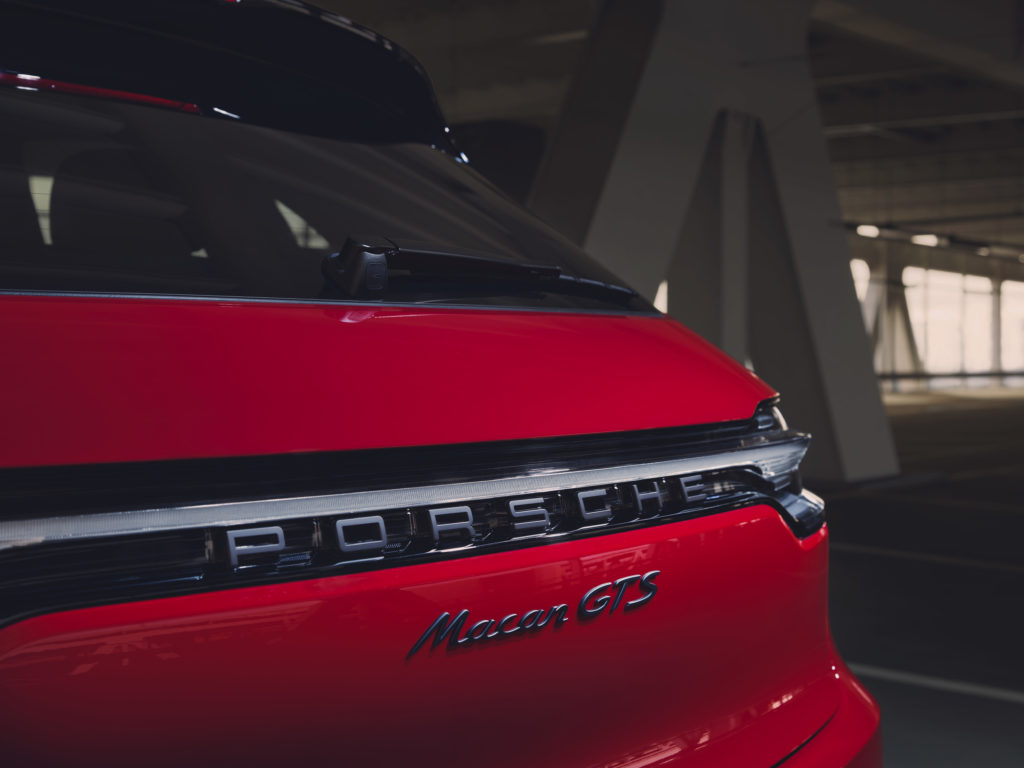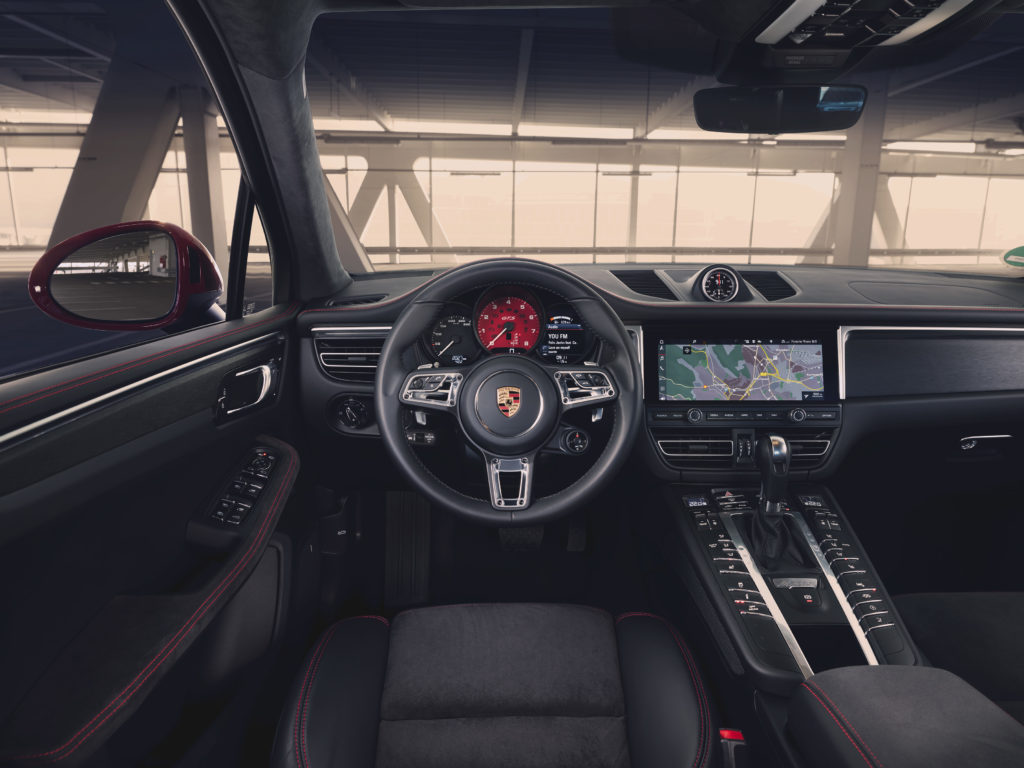
Porsche completes the Macan series with a distinctly sporty model. The new Macan GTS launches with a powerful engine, performance-oriented chassis, characteristic design and enhanced equipment. The 2.9-litre V6 bi turbo engine delivers
380 hp (280 kW) – an increase of 20 hp (15 kW) compared with the predecessor model. Combined with the newly adapted PDK dual-clutch transmission and the optional Sport Chrono package, the Macan GTS can accelerate from zero to 100km/h in 4.7 seconds, three tenths faster than before. It has a top speed of 261km/h.
Among other things, the new member of Porsche’s compact SUV family has earned the abbreviation GTS, which stands for “Gran Turismo Sport”, due to its outstanding driving dynamics. The Porsche Active Suspension Management (PASM) damping control system has been specially tuned. The chassis has also been lowered by 15 millimetres for greater lateral dynamics. Adaptive air suspension is available with chassis lowering by a further 10 millimetres. Combined with the standard 20-inch
RS Spyder Design wheels and the generously sized cast iron brakes
(360 x 36 millimetres at the front, 330 x 22 millimetres at the rear), the new Macan GTS impresses with the agility and responsiveness of a true sports car. As an option, deceleration can be further improved by means of the Porsche Surface Coated Brake (PSCB) with tungsten carbide coating or the Porsche Ceramic Composite Brake (PCCB).
Acoustically, the standard sports exhaust system specifically adapted to the GTS accentuates the driving pleasure in the new Macan GTS. A 2.9-litre V6 engine is at the heart of the sound experience. Its Central Turbo Layout, with two turbochargers arranged in the inner V of the engine, allows particularly direct responsiveness. The maximum torque of 520 Nm (plus 20 Nm) is available over a wide range from 1,750to 5,000 rpm. The sportiest Macan model consumes 9.6 litres of fuel per 100kilometres according to NEDC.

Individual design with black accents
The new Macan GTS also emphasises its exceptional sporty status visually. The standard Sport Design package with new front and rear trim and striking side skirts lends the car a characteristic appearance. The front apron and front section are characterised by black painted elements – a distinguishing feature of all Porsche GTS models. The LED headlights with Porsche Dynamic Light System (PDLS)and the three-dimensional rear lights with LED light bar are also darkened. The LED headlights can be optionally ordered in black with PDLS Plus. Chassis lowering by 15 millimetres, the 20-inch RS Spyder Design wheels in satin-gloss black, the red brake callipers and the trim strips in high-gloss black also emphasise the high-performance appearance. The colour black also sets accents at the rear: here, the diffuser and the tailpipes of the standard sports exhaust system are painted in this colour.

Sports seats exclusive to the GTS and premium materials
High-quality materials such as Alcantara® on the seat centre panels, the centre console armrests and door panels as well as brushed aluminium make it possible to also see and feel the sporty and elegant characteristics of the Macan GTS inthe interior. The multifunction sports steering wheel with the steering wheelrim in smooth leather and shift paddles is standard, as are the sports seats, exclusive to the GTS, with eight-way adjustment and pronounced side bolsters for stable support during dynamic cornering. The GTS leather upholstery in Carmine Red or Crayon with additional Alcantara® features and colour accents, the BOSE® Surround Sound system and the new smartphone tray with inductive charging function are among the many personalisation options.
The new Macan GTS is available to order now with first units arriving in March 2020. Information on the basic retail price, model specifications and local availability can be obtained at the nearest Porsche Centre.
Further information, film and photo material in the Porsche Newsroom: newsroom.porsche.com
Macan GTS: Fuel consumption combined: 9.6 l/100 km; CO2 emissions: 218 g/km
The consumption and CO2emission values were calculated according to the new Worldwide Harmonised Light Vehicle Test Procedure (WLTP). The NEDC values derived from this must continue to be specified for the time being. These values cannot be compared with the values calculated on the basis of the previously used NEDC test.












